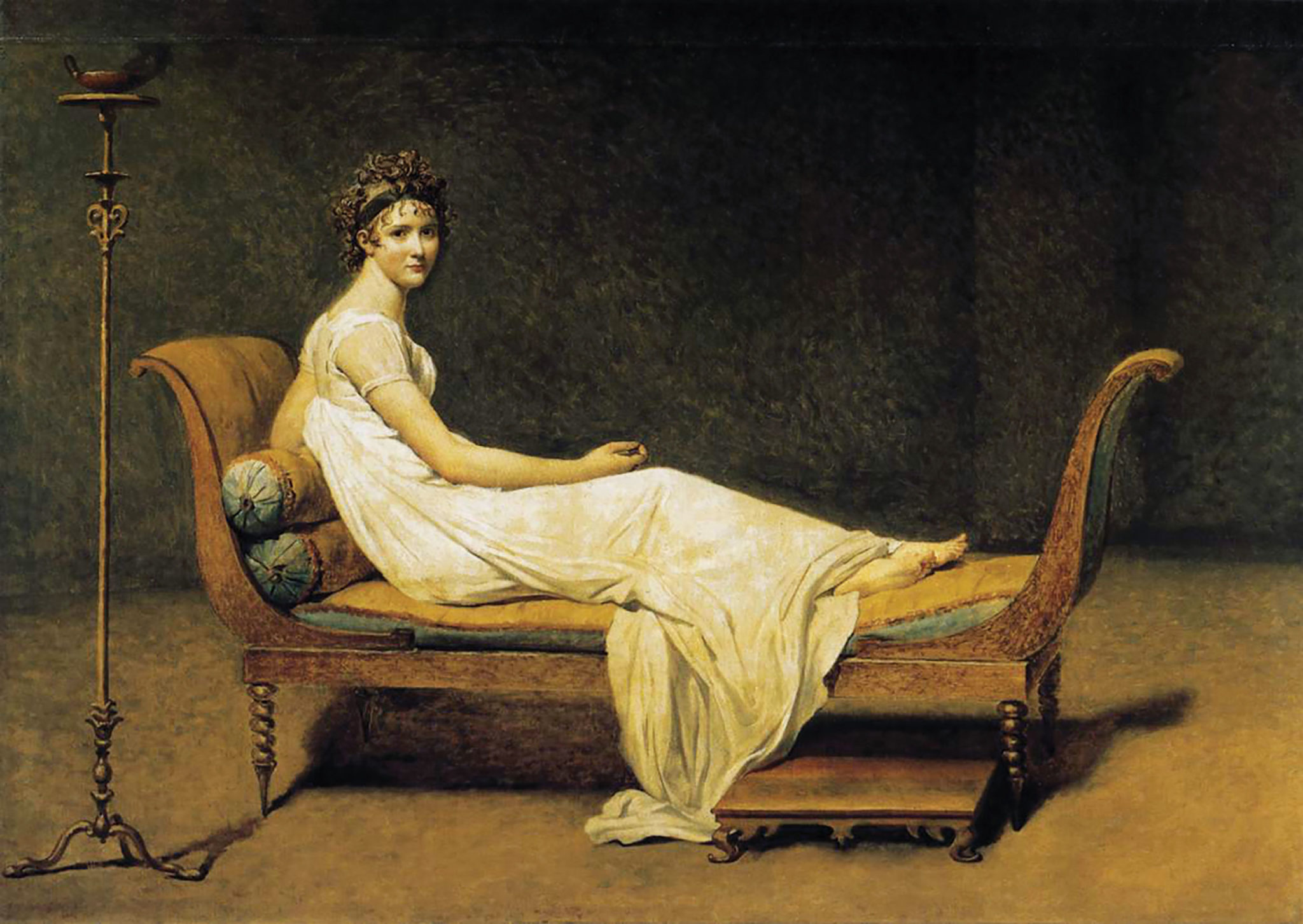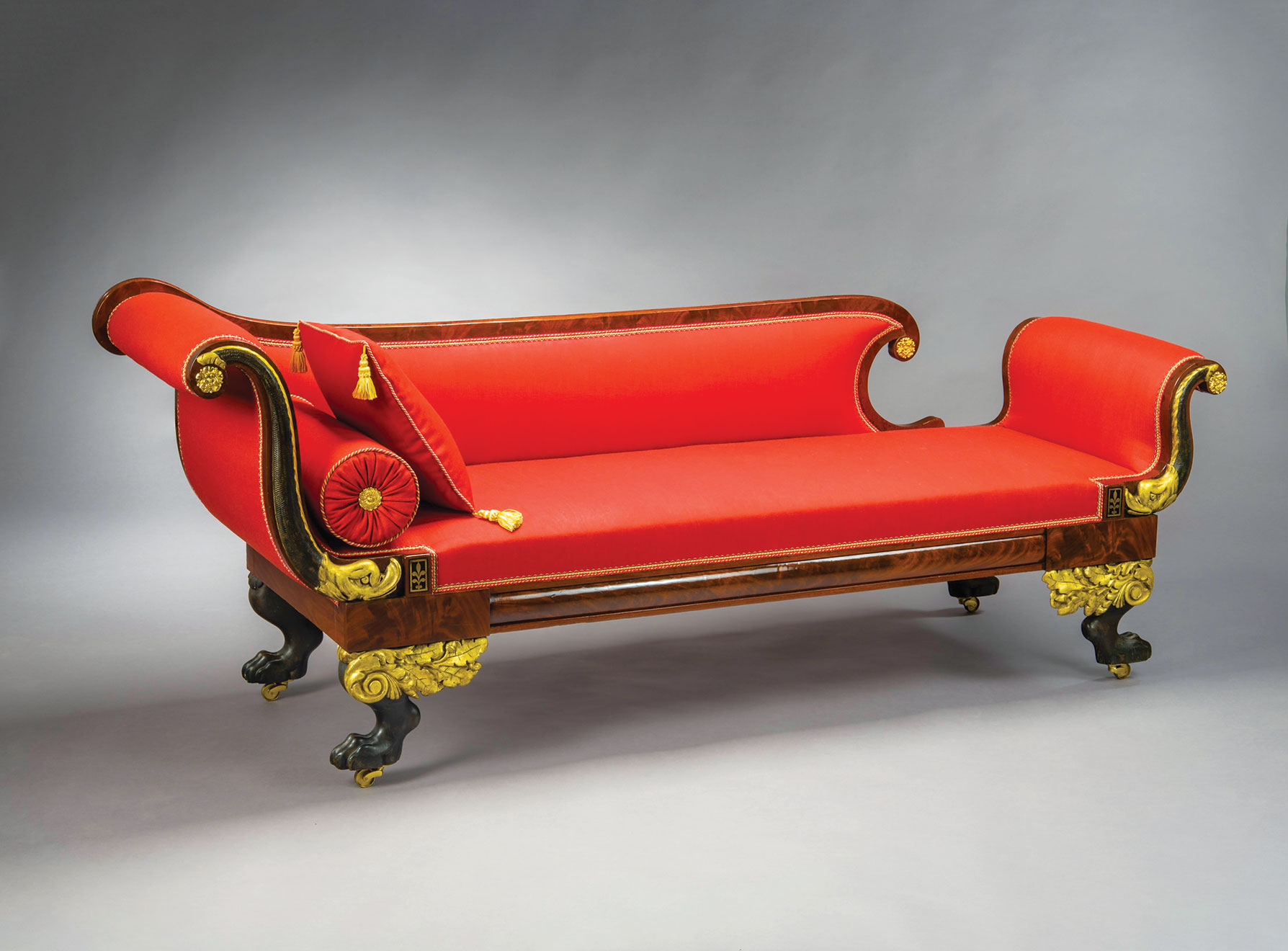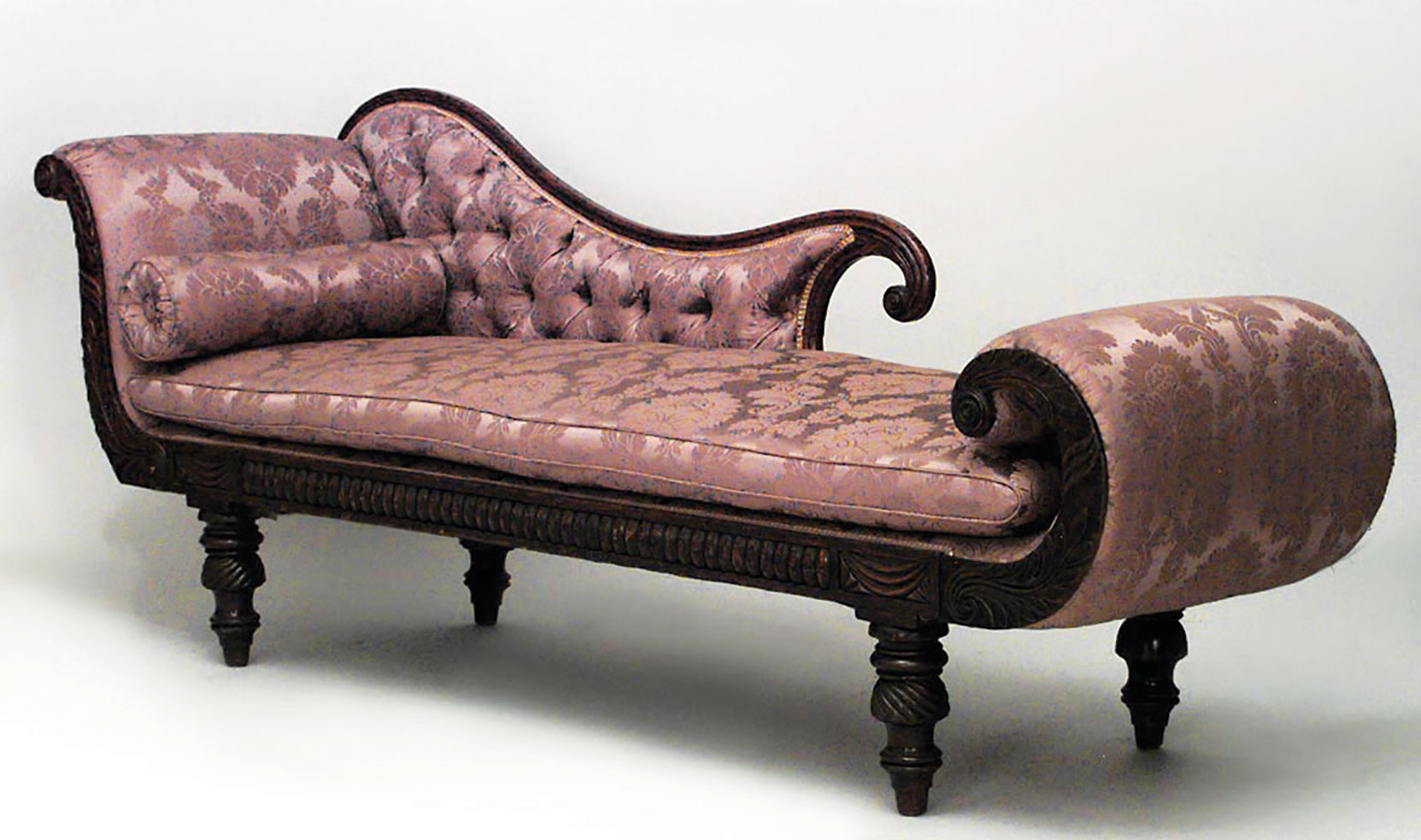The It Girl’s Sofa
Writer Leslie Gilbert Elman
Started in 1800 and left unfinished, Jacques-Louis David’s Portrait of Juliette Récamier has been in the collection of the Louvre since 1826, when it was acquired in a sale of works from the artist’s studio after his death. Its horizontal orientation was unusual for a formal portrait. The fact that the background has been left blank focuses attention on the woman and, of course, the sofa.
Madame Récamier left a lasting legacy to the furniture world
If you were listing the attributes that make someone an “It girl,” Juliette Récamier circa 1800 would tick all the boxes. She was young, beautiful, rich, intelligent and charming. Her interest in art and her flair for interior design made her a tastemaker.
In 1800, Madame Récamier was established among the great hostesses of Paris society, her salons attracting writers, thinkers, provocateurs and artists. That was quite an accomplishment for any woman, let alone a 23-year-old from Lyon, who’d arrived in Paris at age 15 and married a prosperous 42-year-old banker a few months later. The fact that her much-older husband was rumored to have been her mother’s lover—and Juliette’s biological father—only contributed to her allure (and would have explained their reputedly unconsummated marriage).
Among her many admirers was Lucien Bonaparte, younger brother of the Emperor Napoleon; the aristocrat-diplomat-writer Chateaubriand; and writer-politician Benjamin Constant. At one point, amid the political and economic turmoil of the time, there was a plan—later abandoned—for Juliette to dissolve her marriage to Récamier and marry Prince Augustus of Prussia.
During Madame Récamier’s extended visit to London in 1802, as the guest of Georgiana Cavendish, Duchess of Devonshire, newspapers covered her every move—from the masquerade balls she attended to the box she occupied at the opera. When they reported that she’d be visiting Kensington Gardens on a particular Sunday, swarms of gawkers were on hand to catch a glimpse of her.

Dated to around 1820, this “récamier in the Neo-Classical taste” was offered for sale recently by New York City antiques dealer Hirschl & Adler. Made of mahogany with brass and ebony decoration, it is attributed to New York cabinetmaker Duncan Phyfe. There is a similar piece in the collection of the Metropolitan Museum of Art in New York City.
As one correspondent of the day explained, she wasn’t merely fashionable; she was stylish—setting trends rather than following them. Her look was unaffected: she favored simple white gowns, pearls rather than diamonds, and a hairstyle that was natural, bordering on unruly.
Artists clamored to depict her in paintings and sculpture. So it’s a bit ironic the portrait most closely associated with her was among those she liked least.
In 1800, Juliette sat for a portrait by renowned French painter Jacques-Louis David. Dressed in a signature white gown with short sleeves and empire waist, she reclined on a backless sofa. Her hair was a mass of ringlets, her feet were bare, one hand rested somewhat awkwardly on her lap.
David worked slowly and Madame Récamier became impatient with his progress. After a difference of opinion, she asked David’s pupil, Francois Gérard, to paint her instead. David kept his unfinished portrait, which eventually made its way into the collection of the Louvre. The Gérard portrait is in the Musée Carnavalet in Paris. Yet while the Gérard portrait is fully realized and a great deal sexier, it’s the unfinished David portrait that became the definitive Récamier—in more ways than one.
The backless sofa on which Madame Récamier reclines in the David portrait is sometimes referred to as a méridienne, from the French for midday nap. It’s similar to a chaise longue or “long chair” and might also be classified as a day bed or even a fainting couch. (The terminology becomes muddled at a certain point, but a chaise longue usually has one open end and a day bed typically is long enough for one to lie flat.)
The style of Juliette Récamier’s backless (or partly backless) short sofa with two arms dates back to ancient Egypt. It became popular again during the reign of Louis XIV in the late 1600s, and the rise of Neoclassical style in the 18th century only enhanced its appeal, which continued through Napoleon’s reign.

This English Regency mahogany récamier from the early 19th century is offered for sale by New York City antiques dealer Newel via 1stdibs.com. Like many such pieces, it has a partial back and is upholstered in damask.
Even after Neoclassicism was supplanted by other design movements—all the way to Art Deco and beyond—the backless short sofa with two arms remained popular. Somewhere along the line, it acquired another name: That style of sofa became known as a récamier, thanks to its depiction in Jacques-Louis David’s portrait of Madame Récamier.
The Oxford English Dictionary lists the first known written use of the term récamier to refer to a sofa in 1895, and a “récamier couch” is specified in the stage set directions for Edmond Rostand’s 1900 play L’Aiglon—both of which would indicate the word was in common use before then.
Today, you’ll see the word récamier in descriptions of antique furniture, such as the mahogany récamier from around 1820 offered for sale recently by New York City antiques dealer Hirschl & Adler and the English Regency récamier offered by Newel via 1stdibs.com, both pictured here.
The unusual word is a lasting tribute to the charming Madame Juliette Récamier, once the most admired woman in Paris.
Leslie Gilbert Elman is the author of Weird But True: 200 Astounding, Outrageous and Totally Off the Wall Facts. She writes about antiques and other subjects for Design NJ.
